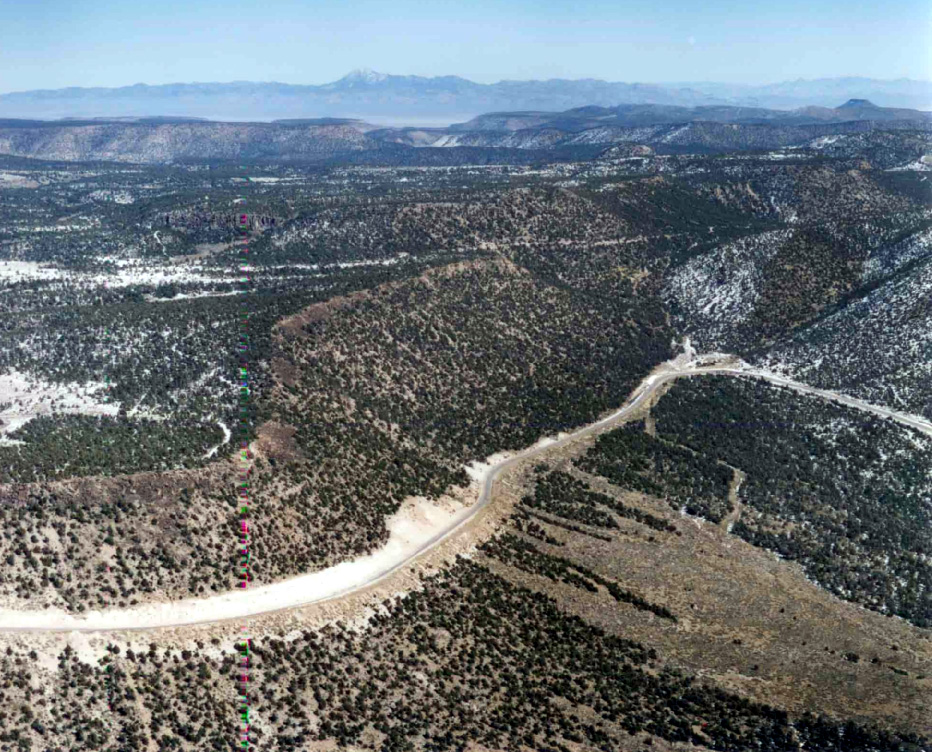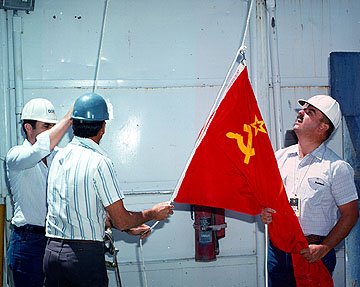Pahute Mesa on:
[Wikipedia]
[Google]
[Amazon]
Pahute Mesa or Paiute Mesa is one of four major nuclear test regions within the
 Pahute Mesa is part of the
Pahute Mesa is part of the
 In 1988, as a prelude to the signing of the protocols to the Threshold Test Ban Treaty and the Peaceful Nuclear Explosions Treaty, the United States and the Soviet Union conducted two joint tests employing proposed treaty verification techniques. The first was ''Kearsarge'', conducted in Area 19 of the NNSS, the second ''Shagan'', conducted at the Semipalatinsk Test Site.
In 1988, as a prelude to the signing of the protocols to the Threshold Test Ban Treaty and the Peaceful Nuclear Explosions Treaty, the United States and the Soviet Union conducted two joint tests employing proposed treaty verification techniques. The first was ''Kearsarge'', conducted in Area 19 of the NNSS, the second ''Shagan'', conducted at the Semipalatinsk Test Site.
Globalsecurity.org. Weapons of Mass Destruction. Library. ''Nevada Test Site Final Environmental Impact Statement''. Figure 4-30: Approximate area of plutonium contamination exceeding 10 pCi/g on the NTS.
/ref>
{{US Nuclear Tests
History of Nevada
Nevada Test Site
Volcanic fields of Nevada
Calderas of Nevada
Nevada National Security Site
The Nevada National Security Site (N2S2 or NNSS), known as the Nevada Test Site (NTS) until 2010, is a United States Department of Energy (DOE) reservation located in southeastern Nye County, Nevada, about 65 miles (105 km) northwest of th ...
(NNSS). It occupies in the northwest corner of the NNSS in Nevada. The eastern section is known as Area 19 and the western section as Area 20.
History
ThePartial Test Ban Treaty
The Partial Test Ban Treaty (PTBT) is the abbreviated name of the 1963 Treaty Banning Nuclear Weapon Tests in the Atmosphere, in Outer Space and Under Water, which prohibited all test detonations of nuclear weapons except for those conducted ...
of 1963 banned atmospheric nuclear testing. This led to a requirement for an underground test area that could accommodate higher yield tests than Yucca Flat
Yucca Flat is a closed desert drainage basin, one of four major nuclear test regions within the Nevada Test Site (NTS), and is divided into nine test sections: Areas 1 through 4 and 6 through 10. Yucca Flat is located at the eastern edge of NTS, ...
.
Pahute Mesa was seen as ideal due to its geology
Geology () is a branch of natural science concerned with Earth and other astronomical objects, the features or rocks of which it is composed, and the processes by which they change over time. Modern geology significantly overlaps all other Ea ...
and distance of over from Las Vegas. Holes can be drilled to a depth of more than . This allows tests in the megaton range to be fully contained with minimal ground motion
Ground motion is the movement of the earth's surface from earthquakes or explosions. Ground motion is produced by seismic waves that are generated by sudden slip on a fault or sudden pressure at the explosive source and travel through the earth a ...
being felt in Las Vegas.
Pahute Mesa was thus incorporated into the boundary of the NNSS in late 1963 under an agreement between the United States Atomic Energy Commission
The United States Atomic Energy Commission (AEC) was an agency of the United States government established after World War II by U.S. Congress to foster and control the peacetime development of atomic science and technology. President ...
and the U.S. Air Force
The United States Air Force (USAF) is the air service branch of the United States Armed Forces, and is one of the eight uniformed services of the United States. Originally created on 1 August 1907, as a part of the United States Army Sign ...
.
Geology and climate
 Pahute Mesa is part of the
Pahute Mesa is part of the Tonopah Basin
The Great Basin Desert is part of the Great Basin between the Sierra Nevada and the Wasatch Range. The desert is a geographical region that largely overlaps the Great Basin shrub steppe defined by the World Wildlife Fund, and the Central Basin ...
and includes the Silent Canyon caldera complex of the Southwest Nevada volcanic field.
Rugged terrain features and harsh winter conditions make year-round operations difficult.
Nuclear testing
A total of 85 nuclear tests were conducted in Pahute Mesa between 1965 and 1992. Three of them—''Boxcar'', ''Benham'' and ''Handley''—had a yield of over one megaton. Three tests were conducted as part of operation Plowshare and one as part of Vela Uniform. In 1988, as a prelude to the signing of the protocols to the Threshold Test Ban Treaty and the Peaceful Nuclear Explosions Treaty, the United States and the Soviet Union conducted two joint tests employing proposed treaty verification techniques. The first was ''Kearsarge'', conducted in Area 19 of the NNSS, the second ''Shagan'', conducted at the Semipalatinsk Test Site.
In 1988, as a prelude to the signing of the protocols to the Threshold Test Ban Treaty and the Peaceful Nuclear Explosions Treaty, the United States and the Soviet Union conducted two joint tests employing proposed treaty verification techniques. The first was ''Kearsarge'', conducted in Area 19 of the NNSS, the second ''Shagan'', conducted at the Semipalatinsk Test Site.
Radioactive contamination
The following tests resulted in a release of radioactivity that was detected outside of the NNSS. The ''Schooner'' plume spread plutonium and other radionuclides across Area 20 and northward into Nellis Air Force Range. According to measurements taken in 2001, the ''Schooner'' crater has the highest annual mean concentration of radioactive tritiated water of any area of the NNSS.Other uses
The ''Schooner'' crater area resembles the lunar landscape. It was used along with other areas of the NNSS to train some of the astronauts of the Apollo program, among them Neil Armstrong, Richard F. Gordon Jr., Dick Gordon, Buzz Aldrin, David Scott, Dave Scott and Rusty Schweickart. In 1970, the Apollo 16 team of John Young (astronaut), John Young and Charles Duke, Charlie Duke trained at Schooner in the Lunar Roving Vehicle, lunar rover.Supporting infrastructure
The Pahute Control Point is located in Area 18, south of Pahute Mesa. It was used until 1971 to monitor tests in Pahute Mesa. The Pahute Mesa Airstrip, also in Area 18, was used to ship supplies and equipment to Pahute Mesa.References
/ref>